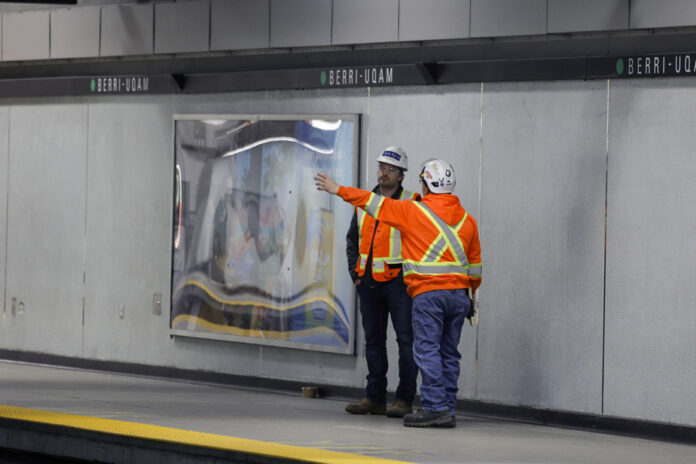The long interruption of the green line, which occurred in the middle of rush hour on Monday due to the deterioration of the concrete in the vault of the tunnel between Berri-UQAM and Saint-Laurent, is the omen of “major work” to occur in the metro at over the next few years, admits the Société de transport de Montréal (STM).
“Major work needs to be done to give us another life cycle of the metro. And that’s what we’re going to do, “said the president of the transport company, Eric Alan Caldwell, on Tuesday, without however advancing on the stations that will be targeted. In his latest budget, he recalled, his group projected spending of $4.4 billion on asset maintenance over the next ten years.
Of this sum, approximately 3.3 billion have been confirmed, the rest still being discussed with donors, including Quebec and Ottawa. “It is normal that the sums are not all confirmed. We are in discussions, but our partners understand the strategic importance of protecting the Montreal metro,” said Mr. Caldwell.
Earlier on Tuesday, in an interview with La Presse, the director general of the STM, Marie-Claude Léonard, had mentioned that the metro is entering “in its second life cycle”. “The Saint-Laurent metro, for example, was built when it opened in 1967. We have to be aware that we have aging infrastructure, so we have to continue our maintenance efforts,” she said. hammered.
The reopening of the green line was announced Tuesday around 5 a.m., nearly 12 hours after the total interruption between the Frontenac and Lionel-Groulx stations, a section that serves around 150,000 people a day. It was a water leak, the exact cause of which is still unknown, which had made it possible to detect cracks in the vault of the tunnel between the Berri-UQAM and Saint-Laurent stations. “The degradation of the concrete is superficial and the integrity of the vault is not in question”, then decided the STM.
Emergency works, held overnight from Monday to Tuesday, “brought down the concrete that could have fallen by vibration on the track”. “There is no curve to the armature. The structure is intact and everything is safe, so we reopened. Reopening is never a decision taken lightly,” said Leonard.
She admits, however, that it is not impossible that this kind of event happens again. “We could have more cracks, maybe. […] We do not expect that with the measures in place, but we are never safe. If it becomes necessary to do so, the STM does not rule out “carrying out longer maintenance nights”. At present, maintenance employees only have a few hours to carry out the work during the night, as the time between the opening and closing of the métro is very tight.
Various preventive works will still have to take place above the tunnel in the coming weeks. A metal mesh will be “installed over the next few nights to give us time to carry out work,” says the STM. “Permanent works” will then be undertaken. “We will go to tender for the reconstruction of the surface of the vault as new. This process can take several months,” spokesperson Justine Lord-Dufour confirmed.
For Pierre Barrieau, an expert in transport planning at the University of Montreal, it is important to understand that the metro is coming at a pivotal moment. “We are entering a long period of permanent work for the entire network. In the medium term, this may mean more and more frequent closings, a longer night period, or an hour or two less of service every day to allow for longer work cycles,” he reasons.
“Already, the metro had a significant accumulated maintenance deficit, but now we are coming to large investments that are coming in the maintenance of assets,” continues Mr. Barrieau.
The latter cites the example of the New York subway, “which entered a period of great decline at the turn of the 1960s because its equipment was reaching the end of its useful life, and the City did not have the financial means. to carry out all the work required”. “We had seen a lot more breakdowns and all kinds of problems then. Maintenance is really fundamental,” he illustrates.
At the start of the day, Tuesday, users were divided. “It worries my wife since she takes the subway every day to go to work. It is certain that she was concerned this morning, ”says Montrealer Marc Biron, who was going to an appointment when La Presse arrested him.
“We must not forget that the metro was built in the late 60s. It’s cement, and we have four seasons, a lot of rain, a lot of frost. I think it’s normal what happens. You just have to manage it well, ”continues the 69-year-old man, who will benefit from free public transport from July, a promise fulfilled by the Plante administration.
“I already have my pass ready for this.” The metro is still the best option for getting around town, “said the sixty-something with a smile.
Other users met by La Presse also claim to have certain concerns. “We especially wonder if there is more important work to come,” said one of them, for example, as he entered the metro at Berri-UQAM.


















